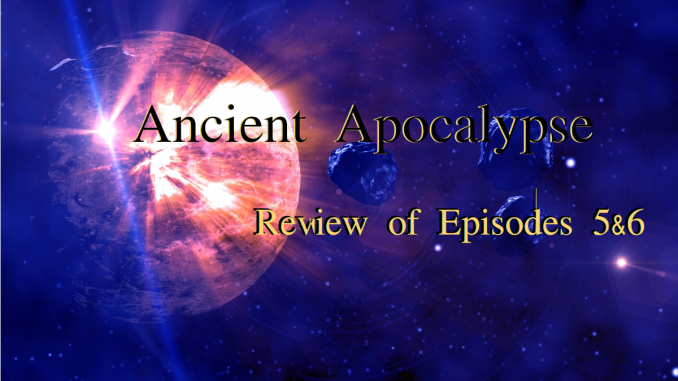
This review has us looking at Hancock’s opinions of Göbekli Tepe, Poverty Point, and Serpent Mound as he makes every effort to shoehorn his conclusions to data both real and fake.
Episode 5
In episode 5, Hancock takes us to Göbekli Tepe in Turkey. This is the site of a series of circular stone structures constructed between around 9500 – 8000 BCE by a pre-pottery Neolithic society. The site is particularly known for its large, stone, T-shaped pillars, many abstractly presented as large anthropomorphs, heavily decorated with images of local wildlife.
Archaeologists and pre-historians find the site fascinating because it appears to be one of the earliest examples of permanent human settlements in the world. This occurred right at the cusp of what’s been called the Neolithic Revolution, a wide-scale transition from a hunter-gatherer subsistence strategy to a strategy that was more sedentary and included domestication of crops and animals.
This sort of “revolution” sounds abrupt, but does not occur overnight. As such, there is some disagreement among archaeologists about whether or not Göbekli Tepe was created by nomadic hunter gatherers or sedentary agriculturalists. The answer is just as likely to be a bit of both since it takes time to alter the genetic makeup of crops and animals through domestication, selecting for bigger, better food sources.
Less than 5 minutes into this episode, Hancock states, “archaeologists accept that [Göbekli Tepe] dates back to around 11,600 years ago.” He makes this weird comment as if it was he that dated the site and those pesky archaeologists begrudgingly “accept” it. To be clear, archaeologists are the reason we know it dates to around 11,600 years ago (ca. 9500 BCE). In fact, we insist it barring new data.
Also early on, Hancock seems to find some significance with the fact that the earliest enclosure constructed happened to be the biggest one and that it was done well.
How did a community of Stone Age hunter-gatherers succeed so brilliantly in building with megaliths at their very first attempt?
Graham Hancock, Ancient Apocalypse, Ep.5 (00:09:29)
Isn’t it time to consider the possibility that the great megalithic enclosures weren’t some miraculous overnight invention of hunter-gatherers, but were a legacy from a precociously advanced lost civilization of prehistory?
This seems to be consistent with the each of the previous four episodes where he casually dismisses the capabilities and accomplishments of the people indigenous to each site he visited. He goes on to almost accurately say that this is a notion “mainstream archaeologists find almost offensive.”
It’s almost accurate because there are no “mainstream” archaeologists, there are only archaeologists. Archaeology is either done scientifically or it isn’t. When it isn’t, this is pseudoarchaeology. And because archaeologists don’t “almost” find it offensive to deny indigenous people their own heritage and accomplishments, we definitely find it offensive.
I find it curious that Hancock seems to think archaeologists don’t think Göbekli Tepe was constructed by hunter-gatherers (HG). Since it was an archaeologist and his team of archaeologists that initially pointed this out. While there is some debate about the degree to which the site was inhabited (permanent, partially permanent, initially permanent, part-time etc.), there’s no denying that this site was constructed at a point in time when HG was still a subsistence strategy.
Hancock then goes on to describe the sheer size of the site, including the un-excavated portions totaling “more than 12 soccer pitches.” To whic h he states his astonishment:
You can’t just wake up one morning with no prior skills, no prior knowledge, no background in working with stone, and create something like Gobekli Tepe. There has to be a long history behind it and that history is completely missing. And to me, it very strongly speaks of a lost civilization. Transferring their technology, their skills, their knowledge to hunter-gatherers.
Graham Hancock, Ancient Apocalypse, Ep.5 (00:10:30)
Why not?
Okay, sure, it’s not going to happen over night. But no one said that it did. The earliest dated portions of the site begin at around 9500 BCE. The site was continuously modified through it’s apparent occupation (thus far understood) to about 8000 BCE. That’s 1,500 years of occupation or 60 generations! The humans living 11,000 years ago were every bit as intelligent as the humans who invented iPhones and put robots on Mars.
Even completing the first enclosure or usable structure could have taken several generations. And probably did. But Hancock seems to be assuming up to this point that the excavated portions of Göbekli Tepe are the oldest and that people couldn’t learn from other people at other settlements.
Which is why I find it remarkable that, in the very next breath, Hancock is willing to admit that there are other sites near Göbekli Tepe that are at least as old when he mentions Karahan Tepe, just a few dozen kilometers away. This site was very recently discovered and data are just now being revealed. It has similar stone pillars but not quite as big, most without the T-shape, and adorned with animal imagery, but not quite as many.
All consistent with being a bit earlier than Göbekli Tepe.
For me, what the evidence speaks to is pretty clear. It’s a transfer of technology. People who already knew how to create megaliths and build a big megalithic site came to Göbekli Tepe. They already had knowledge of agriculture, and they used that site to mobilize a local community, to organize them and to introduce them to agriculture.
Graham Hancock, Ep. 5 (00:16:20)
This really makes no sense scientifically. As a thought, ignited by the firing of a few synapses in Hancock’s brain, it may make him feel good, but the reality outside of his skull would suggest otherwise. If we assume there existed a culture with knowledge of agriculture prior to the Neolithic, such that this culture–or “advanced civilization,” as Hancock puts it–could teach it to another one, then it would have left a trace both archaeologically and genetically.
And yet, both the archaeological and genetic records appear to show the domestication of crops and animals clear enough to pinpoint in time and space. If Hancock’s imaginary “civilization” truly existed, why are genetic chronologies of both crops (like wheat and corn) and animals (like goats and llamas) consistent with archaeological records as we understand it? Where is this mystery “civilization?”
What was the subsistence strategy of an alleged “advanced civilization,” so advanced that they could teach agriculture to more primitive natives–the same human species as you and I, which went from no flight to the Moon in just a few generations? This mystery civilization supposedly lived alongside their more primitive pupils, yet no trace of their pottery, stone ware, metals, bones, or living spaces remains behind.
Siriusly?
Hancock, again supposes that the stones of Göbekli Tepe are oriented to Sirius, as he did in Malta. But it amounts to just so much post-hoc targeting. I’m sure we could find many “alignments” ranging from stars, star groups, sun/moon locations, wind, important nearby landscapes, and so on. All applied post-hoc. Some of them, including star alignments, might be valid. But it comes down to significance versus intentionality as discussed in the Malta episode review.
We simply don’t know what the people of Göbekli Tepe did. Or how they chose to align their structures. Or even what stars or groups of stars were important to them.
The last part of this episode was just bizarre. Hancock and some other guy explore the idea that Göbekli Tepe has a stone that has icons matching constellations in the sky at a period about 1,000 years earlier than its construction began. The sheer number of assumptions being made here is not insignificant.
Among them are the assumption they know what constellations were important to the people of Göbekli Tepe, over 11,000 years ago. And then there’s the assumption that these people knew what constellations existed over 1,000 years before them! All during a period where writing doesn’t exist. That the icons on the pillar even represent constellations in the first place is probably the biggest assumption. None of this stops Hancock and his friend from stating them all as fact. After all, it fits the conclusion they arrived with.
But now, at the end of the episode, Hancock appears to be waving his hands and saying that the people of Göbekli Tepe weren’t taught agriculture by his mystery civilization at all since the “star alignments” for the Vulture stone (pillar #43) align 40 generations prior to its construction–6,000 years before writing was invented. Meaning that this “lost advanced civilization wasn’t even present to teach agriculture, architecture, and construction to the HG people of Göbekli Tepe.
So how did they pass on their knowledge?
Episode 6
Hancock shifts his focus to the United States, first with Poverty Point in Louisiana then the Serpent Mound in Ohio.
Poverty Point
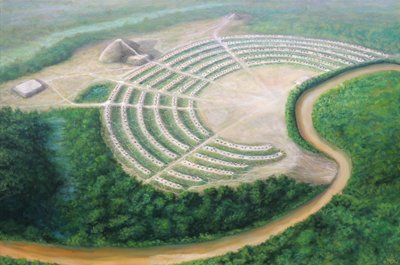
Louisiana at it’s height. Artwork by Herb Roe.
A National Monument and UNESCO World Heritage site, Poverty Point consists of a set of mounds with a plaza on a 402 acre property dating to around 1700 to 1100 BCE for construction. The site might be settlement, a ceremonial complex, or even a trade center for the people of the Late Archaic period. We just don’t know for sure.
Let’s begin with a quote from Hancock.
No documents or traditions have survived to tell us what Poverty Point’s purpose was. So archaeologists are left guessing. Site manager and historian, Mark Brink Jr., is the first to admit that mainstream archaeology hasn’t been able to confirm much about this mysterious site. Tell me everything you know about this site.
Graham Hancock, Ep. 6 (00:05:48)
This is a pretty fair statement overall, but the tone and implications Hancock uses is consistent with his overall rant against archaeologists in general that permeates throughout each episode. In fact, the overarching thesis of this series seems as much to be “My grudge against the archaeological establishment for labeling me a nutter” as it is “my idea of a lost, advanced civilization.”
He’s not wrong that archaeologists are “left guessing,” but then so is he. Archaeologists will, at least, let you know that they are guessing if they suggest an hypothesis that hasn’t any hard evidence: “this is just a guess, but perhaps this was a ceremonial site.” Hancock just states things as facts.
And, in case you missed me say it in the first episode’s review, or earlier in this review, let me repeat: there is no “mainstream archaeology. One is either doing archaeology scientifically or one isn’t. If you’re making a claim about archaeology that isn’t grounded in science, it’s pseudoarchaeology.
Solstice and Other “Alignments”
Hancock goes on to describe alleged solstice alignments of the mounds from various vantage points and, sure, these probably line up. There are likely some star alignments, too. The people living there would certainly have had a view of the night sky unlike anything most modern people are familiar with.
While working in the Pecos Canyonlands of Texas during two different summers (once at Devil’s River; once at Eagle Canyon) I remember going to sleep in my tent with the Milky Way seeming so bright you could just about read by it.
So, yes, solstice alignments seem reasonable. But we still have to acknowledge that these alignments might be unintentional and that there may be other alignments intended. The river runs nearly north-south at one point, perhaps the overall landscape is the driving motivation. We just don’t know and it’s just as much a guess to Hancock.
He then presents the viewer with the circle structures that are defined by post holes discovered on the plaza. The post holes are currently represented by white barrels but it’s unknown to what height the posts were. They could have been knee-high or as high as modern telephone poles, though I would think the depth of the post holes might give us some clue.
Hancock marvels at the 40 or so circular structures, most of them discovered and documented during geophysical prospection as magnetic anomalies. Some of the post holes were excavated, which is how they know wooden posts were used. They vary in size and were made at various times throughout the period the site was in use.
Something Hancock seems desperate to associate the circles with are star alignments of any sort so when Brink tells him that it doesn’t make sense for these circles to represent astronomical observatories, Hancock appears put off and responds with a strawman of what Brink just said, “Why should the people who lived here and created this place, why should they not have been interested in the sky?”
Looking somewhat annoyed, Brink quickly fires back, “I’m not saying they weren’t. I bet they were.” Hancock grills him on what he thinks they were used for and Brink says what any good archaeologist or historian would say: “we don’t know yet.”
Serpent Mound
Hancock moves on to the Serpent Mound in Ohio and bitches about the the Ohio State Historic Marker that was erected decades ago. He criticizes the fact that it states the effigy was originally constructed in 1000 CE by the Fort Ancient Culture rather than 320 BCE by the Adena Culture. In my mind, this is actually a positive thing and, though I’m sure he’d like the sign replaced, I’d like to see it remain with an additional, smaller sign attached as an addendum describing why the dates are now pushed back. This is how science works: revision with new data. And it’s helpful for the public to see the process.
Those cast-metal signs are generally about $3,000 or more each and costly to replace. Tax-payer money is probably better spent doing more research, paying staff salaries, or updating tools and equipment, but I’m sure the Ohio History Connection would welcome Graham Hancock’s monetary contribution and put it toward a new marker.
Incidentally, all the interpretive signage inside the visitor’s center is up to date. But he’ll have to take my word for it.
Banned? Censored?
Hancock was miffed that he was unable to enter the grounds and film with his crew:
The administrators of Serpent Mound have decided to ban me. We’ve made repeated efforts to get permission to film here, but they denied us that permission. On what I regard as ideological and indeed rather personal grounds, let me read from their email.
“Our role is to ensure that Serpent Mound’s integrity and preservation, both physically and in its historical interpretation, are maintained. Because the presenter of this series, Graham Hancock, proposes a theory and story that do not align with what we know to be true about Serpent Mound, your request is declined.”
A correct word for this so-called mission to protect the interpretation of the site is, of course, censorship. And what more effective way for archaeologists to censor and restrain and crush opposing views than to deny access to archaeological sites?
Graham Hancock, Ep. 6 (00:17:09)
Of course, Hancock uses this as an excuse to claim he’s being persecuted. He lies and states he’s “banned” and “censored,” when the reality is he just didn’t get the Special Use Permit to film with his crew. They’re all more than welcome to walk around and participate like any other visitor when the park is open, they just couldn’t bring in their drones, camera gear, microphones, and associated regalia.
Also, the denial to film wasn’t made by archaeologists. The site is maintained by the Ohio History Connection, which manages over 60 historic properties in Ohio (probably more). A special use permit would have been submitted and, most likely, the park superintendent or lead administrator would have the final say. Or perhaps an advisory council at the OHC. These folks may or may not have archaeological backgrounds, but are not working as archaeologists. They’re simply looking out for the best interests of the park itself in keeping with current agreements among Native American Tribes, which still deem Serpent Mound a sacred site.
Hancock seems to always leave out the people, particularly the living and indigenous ones.
But, no… Hancock thinks his “ban” is because he has proof the effigy’s head points to the setting sun of the summer solstice and they just don’t want to hear it. Oh, and he’s miffed that they let trees grow up around the head to hide it.
I guess by “hiding” these alleged alignments, the staff at Serpent Mound probably shouldn’t leave all those pesky signs around.
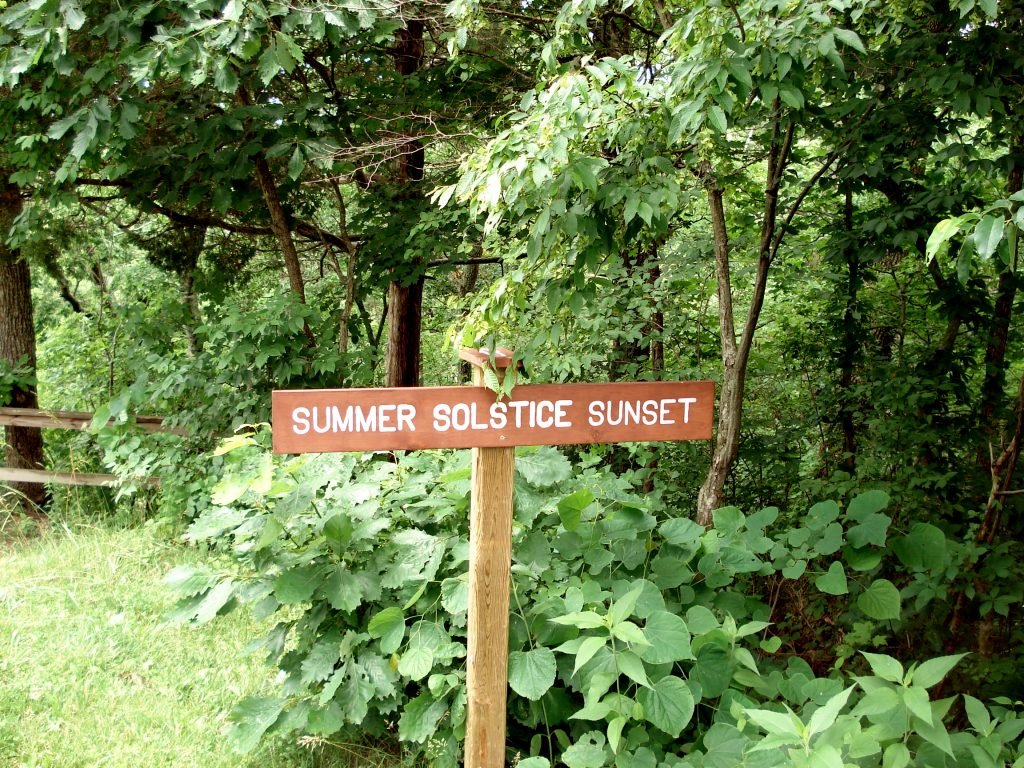

At any rate, Hancock insists the Serpent Mound was built much earlier than the 320 BCE. But unlike the archaeological teams that worked at the site and pushed the date back from 1000 CE to 320 BCE, Hancock just says this is so without any real evidence. No dating. Nothing tangible.
Instead, Hancock suggests that because the alignment of the serpent’s head is 2 degrees off and not dead on, that this means the 2 degree difference is because it was lined up perfectly 12,800 years ago when the Earth’s axial tilt was different (it bounces between 22.1 and 24.5 degrees every 41,000 years)
I’m finishing this review a little late at night, but it just occurs to me that if the cycle is 41,000 years, and you divide that by 3.4 degrees (the difference of 22.1 and 24.5), the obliquity of the axis therefore changes 1 degree every 12,059 years. So two degrees would be over 24,100 years ago.
I’m tired and maybe I have that all wrong. Or, maybe the two degrees Hancock was referring to was 1 degree each side of the solstice? Tell me in the comments if you think my math is off or if I’m just misunderstanding Hancock here.
If I’m correct after all (and I’m probably not), does Hancock mean to tell us that he wants his Serpent Mound builders to be precise in their alignments or not? They would still be off by 1 degree.
Regardless of the math, this is yet another case of Hancock looking for only those data which support the conclusion he begins with. In fact, the real clue that Hancock is clueless is Hancock himself. He states more than once that the Serpent Mound is a reconstruction! It was probably heavily modified in the early 1900s and if it were perfectly aligned with the solstice in 320 BCE, a 2-degree difference today after one or more reconstructions would be generous.
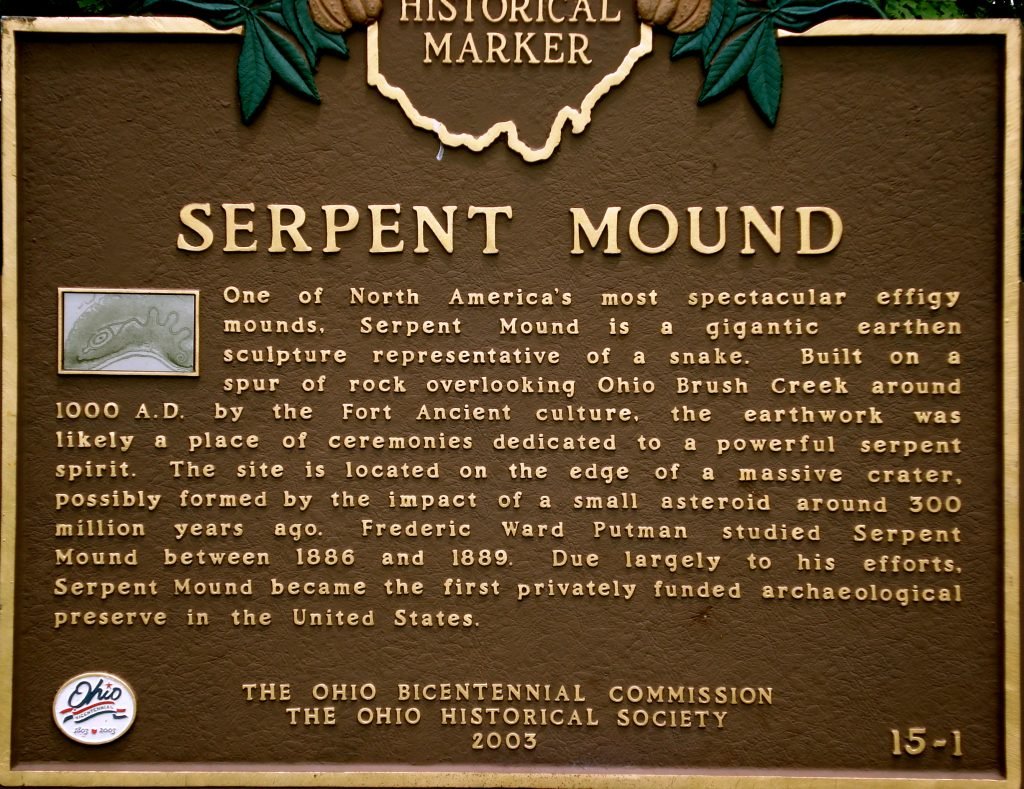
So far, Hancock still hasn’t defined his “lost, advanced civilization.”
Images not my own were obtained via WikiCommons / Wikipedia through the CC BY 4.0 license or attributed to the photographer/creator.

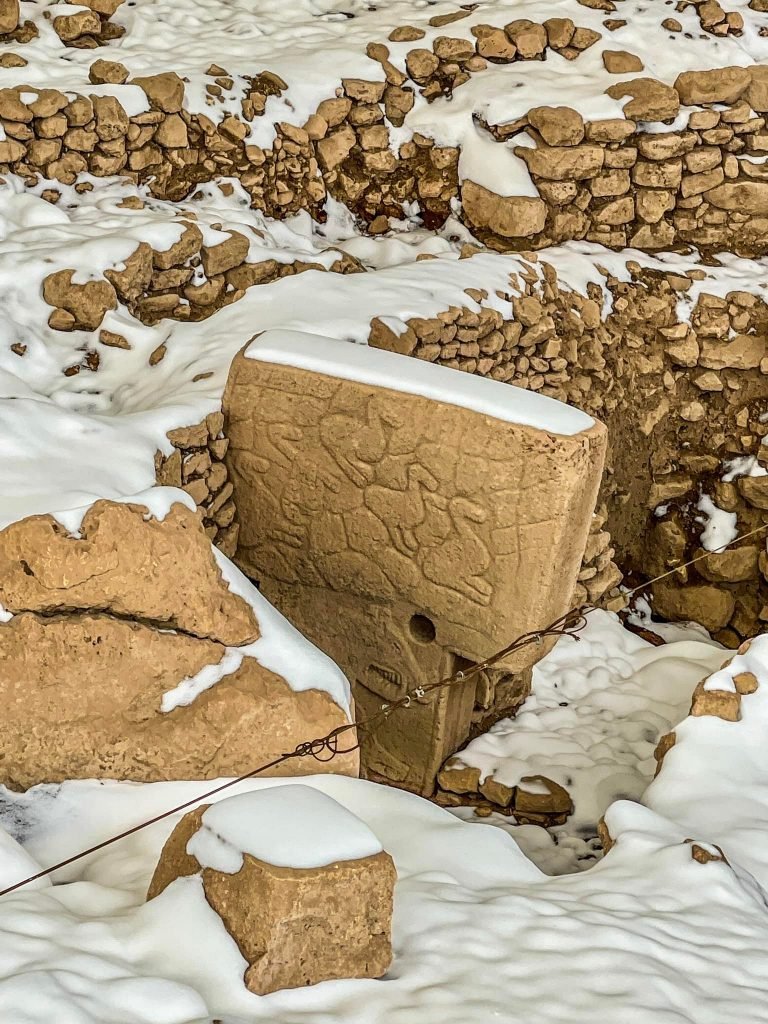

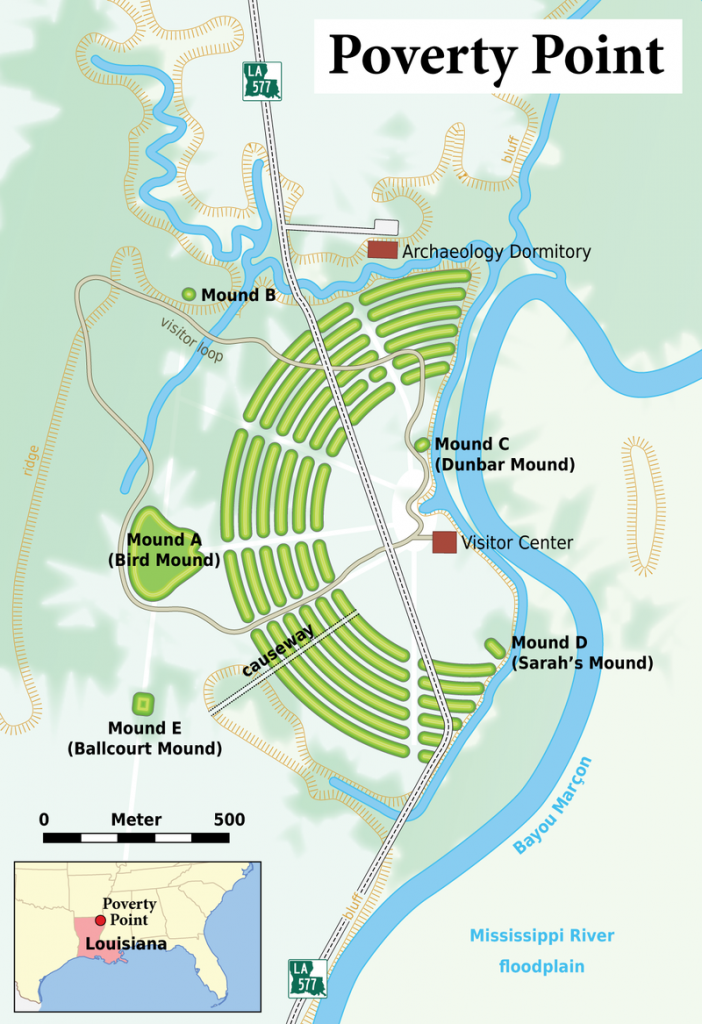
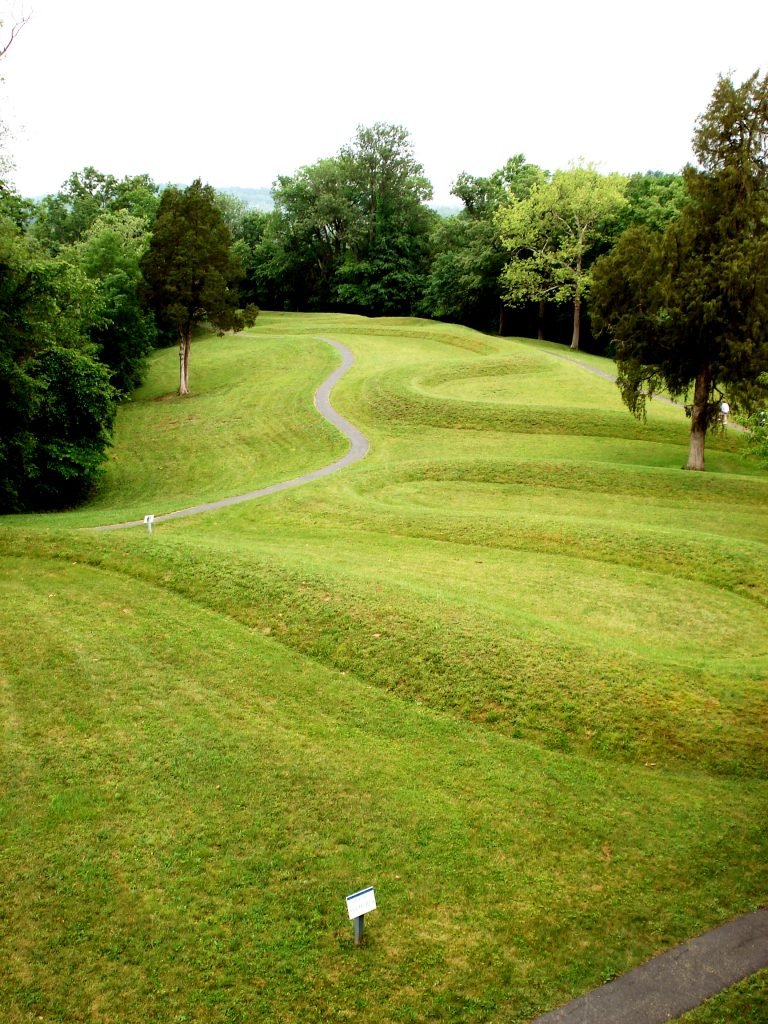
I am deeply appreciative of your hilarious and methodical take-downs of this arrogant, despicable, anti-intellectual windbag. One item you forgot to note so far. Hancock has never talked about how each of the places he visits in this series mysteriously cause him to walk in slow motion to irritating soaring, overblown music, and brainwash the crew into shooting his face extra close-up while trucking the camera around his aggrieved head. Since he isn’t capable of walking in slow motion himself, methinks a previous “advanced” civilization created this phenomenon. These creatures still live in the depths near Atlantis in the bottom feeding cesspool called Discovery, Inc. Shame on Netflix. In the 1970s as a teen, I enjoyed Chariots of the Gods, knowing it’s all a bunch of speculation. But after a recent screening of the 1973 program, I think that film is far more watchable than this Hancock tripe.